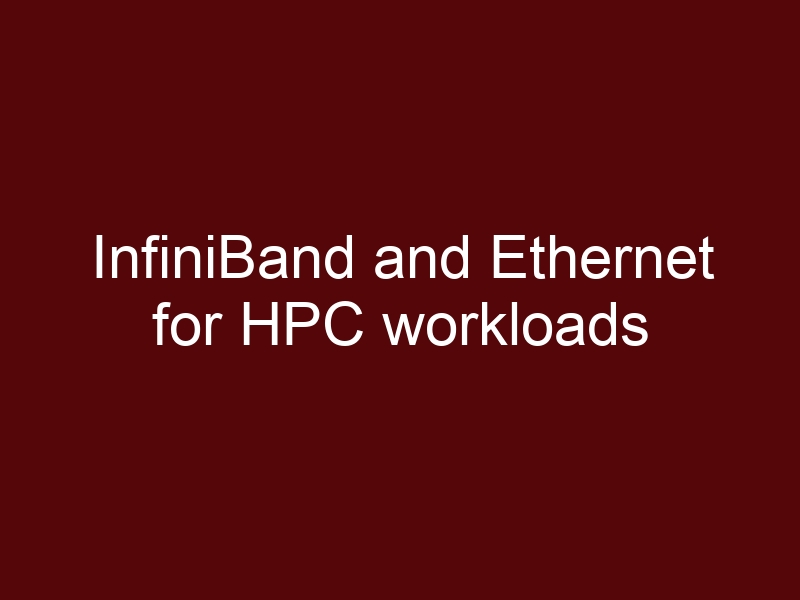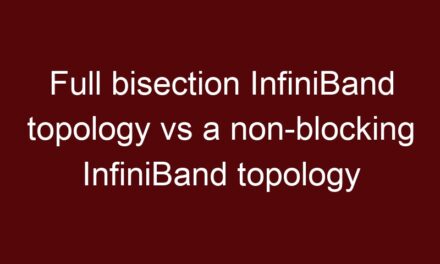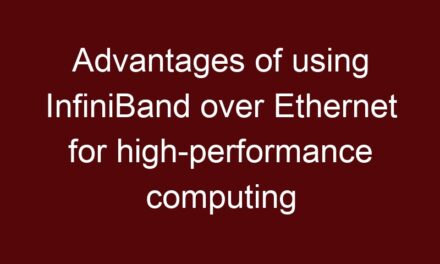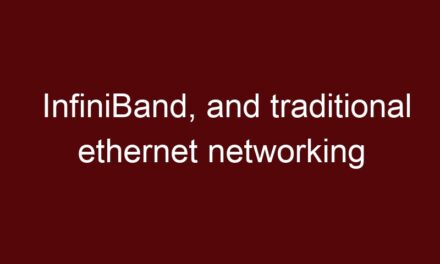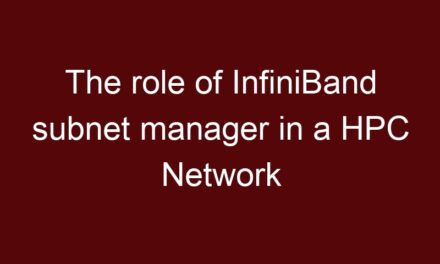InfiniBand and Ethernet are two prominent networking technologies used for High-Performance Computing (HPC) workloads, each with its own set of advantages and disadvantages. Here’s a comparison of the two:
Advantages of InfiniBand:
- High Bandwidth and Low Latency: InfiniBand offers high bandwidth and low latency, making it well-suited for data-intensive and latency-sensitive HPC applications. This results in faster data transfers and reduced communication delays.
- Message Passing Interface (MPI) Performance: Many HPC applications use MPI for communication between nodes. InfiniBand’s low-latency and high-bandwidth characteristics enhance MPI performance, enabling efficient parallel processing.
- Remote Direct Memory Access (RDMA): InfiniBand supports RDMA, allowing data to be transferred directly between memory locations on remote nodes without involving the CPU. This reduces CPU overhead and accelerates data transfers.
- Quality of Service (QoS): InfiniBand provides QoS mechanisms that allow administrators to allocate resources and prioritize traffic based on application requirements, ensuring efficient resource utilization.
- Efficient Point-to-Point Communication: InfiniBand’s point-to-point communication model is advantageous for many HPC workloads, as it enables direct communication between specific nodes without going through switches.
- Topology Options: InfiniBand supports various topologies like fat-tree, hypercube, and torus, allowing flexibility in designing network architectures that match application needs.
Disadvantages of InfiniBand:
- Cost: InfiniBand hardware can be more expensive than Ethernet, particularly in terms of switches and adapters. This cost factor can impact the overall budget of an HPC deployment.
- Limited Ecosystem: While InfiniBand is well-established in the HPC domain, it might have a smaller ecosystem compared to Ethernet in terms of available hardware, software, and support.
Advantages of Ethernet:
- Ubiquity: Ethernet is the most widely adopted networking technology, with a well-established ecosystem and broad hardware and software support.
- Cost-Effectiveness: Ethernet hardware tends to be more cost-effective compared to InfiniBand, making it a more budget-friendly option.
- Scalability: Ethernet networks can be easily scaled to accommodate a large number of devices and nodes. This is especially important in data center environments hosting diverse workloads.
- Versatility: Ethernet supports various communication protocols and is not limited to HPC workloads. It can be used for general-purpose networking needs as well.
Disadvantages of Ethernet:
- Higher Latency: Ethernet typically exhibits higher latency compared to InfiniBand, which can negatively impact the performance of latency-sensitive HPC applications.
- Lower Bandwidth: While modern Ethernet technologies have significantly increased bandwidth, they might still lag behind InfiniBand in terms of raw data transfer rates.
- Overhead: Ethernet’s packet-based communication model introduces additional overhead due to protocol encapsulation, which can impact CPU utilization and overall efficiency.
- Jitter and Variability: Ethernet traffic can experience more jitter and variability in latency due to the way data is transmitted in packets and frames.
In summary, the choice between InfiniBand and Ethernet for HPC workloads depends on factors like application requirements, budget constraints, and the specific trade-offs that an organization is willing to make between performance, cost, and versatility. InfiniBand excels in delivering high bandwidth and low latency for data-intensive and latency-sensitive applications, while Ethernet offers broader compatibility and cost advantages.

